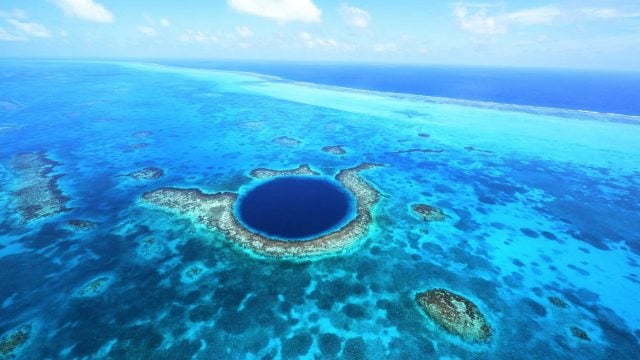The discovery of Taam Ja’, the second-largest blue hole in the world, has excited scientists in the Colegio de la Frontera Sur, who announced their findings on February 28th, 2023. The blue hole, which translates to ‘deep water’ in Mayan, is located in the Bay of Chetumal on the Yucatan Peninsula. This geological formation is known for its darker coloration compared to the surrounding surface due to its depth.

A blue hole is a naturally occurring geological formation that resembles a sinkhole on the ocean floor. These underwater caves are characterized by their depth, which gives them a darker coloration compared to the surrounding water. Blue holes are formed by a variety of processes including dissolution, fracturing, and the collapse of the soil.

The exploration of Taam Ja’ was led by a team of specialists from various fields who employed cutting-edge techniques such as echo-sounding to investigate the ecosystem of the underwater cave. According to their study in Frontiers in Marine Science, these coastal karstic formations are often left unexplored due to their inaccessibility. However, the team utilized local fishermen to navigate and explore the geomorphometric and physiochemical characteristics of Taam Ja’.
Taam Ja’ has a nearly perfectly circular shape on the surface and covers an area of over 13,000 square meters. The research indicates that the cave reaches a depth of 274.4 meters below sea level, with steep sides that have slopes of less than 80 degrees. The hydrographic profiles show a column of stratified water inside the blue hole and a completely oxygen-deprived chamber. All of these unique characteristics make Taam Ja’ an exceptional environment, according to the team.
The scientific significance of Taam Ja’ cannot be overstated. The blue hole presents an unparalleled opportunity to understand the environment and climate of the planet thousands of years ago. Unlike ocean trenches and abysses that reach depths of up to 11,000 meters, blue holes are less deep and are formed by different processes such as fracturing, dissolution, and soil collapse. Furthermore, these underwater caves have been less explored and studied by the marine scientific community until now.
In conclusion, the discovery of Taam Ja’ is a significant scientific achievement that provides valuable insights into our planet's history. The exploration of the blue hole and the findings of the research team have shed light on the unique characteristics of these coastal karstic formations. The team's use of innovative techniques and collaboration with local fishermen highlights the importance of interdisciplinary research in uncovering the secrets of our planet's past.